10 Wild Animals in Liberia [Wildlife in Liberia]
Want to know more about the wildlife in Liberia?
Discover 10 wild animals in Liberia in this post, as well as interesting facts about them. 🇱🇷
Learn All About Liberian Animals
Ready to learn all about Liberian animals?
I’ve always been fascinated by animals, and by how they can be so different from one country to another. In this guide, we’ll focus on the many animals Liberia has on the land, in the sky, and underwater.
I’ve split the guide into 6 categories:
- Native animals from Liberia
- Endangered animals of Liberia
- What is Liberia national animal?
- How many animals native to Liberia?
- What monkeys are in Liberia?
- What snakes are in Liberia?
Let’s dive in right away with our first category!
Native Animals from Liberia
Liberia is a small African country located in the western part of the continent, next to the Atlantic Ocean. It was the first African republic to proclaim its independence, is the first and oldest modern African republic, and it used to be an American colony. It is bordered by Sierra Leone, Ivory Coast, and Guinea, and its capital and largest city is Monrovia, which counts more than 1,010,000 inhabitants.
An interesting part of the country that I wanted to tackle is its wildlife. In light of that, I have listed the best of it, and I hope you will love learning what animals live in Liberia.
Here’s the Liberia animals list.
1. Western tree hyrax
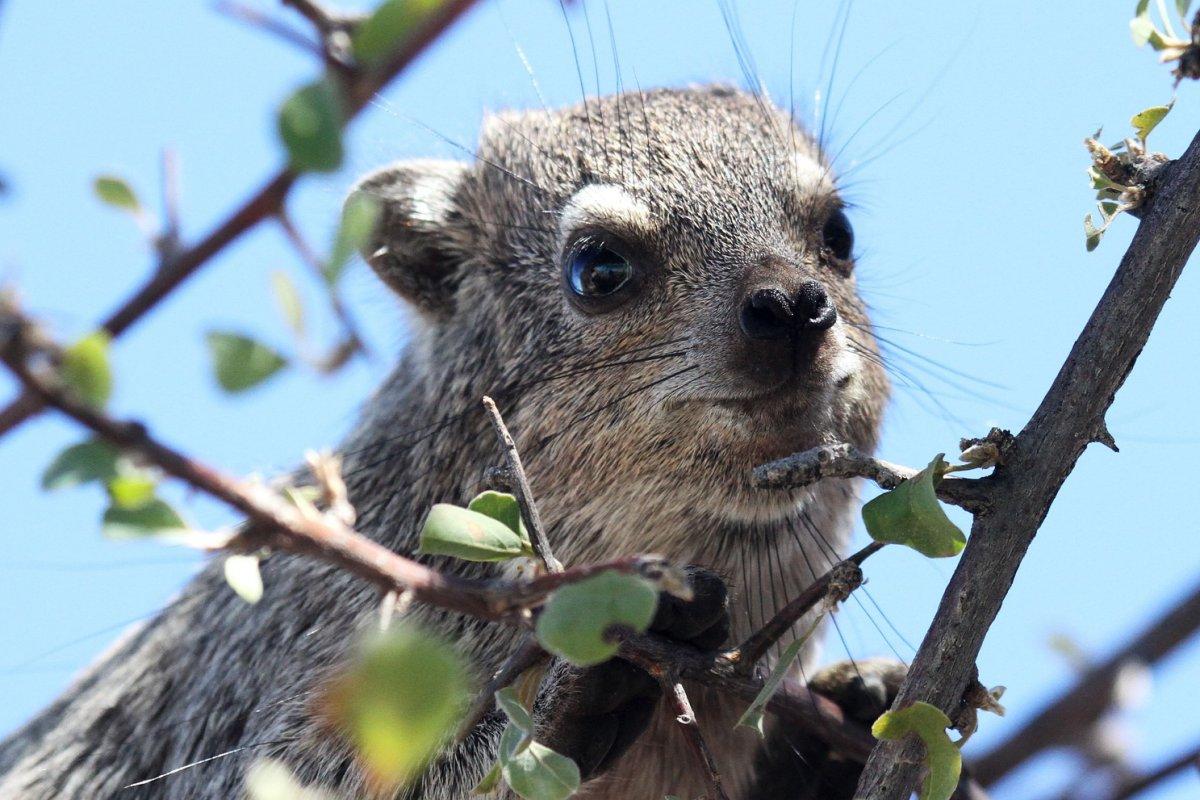
- Name: Western tree hyrax
- Scientific name: Dendrohyrax dorsalis
- Conservation status:
The western tree hyrax, also known as Beecroft’s tree hyrax or the western tree dassie, is a species of hyrax native to Central and West Africa. It has short, coarse fur and a white patch of fur beneath the chin, making it unique among other hyraxes.
This mammal is similar to a large guinea pig, and it is mostly solitary, although it sometimes gathers in groups of 2 to 3 individuals.
2. African forest elephant
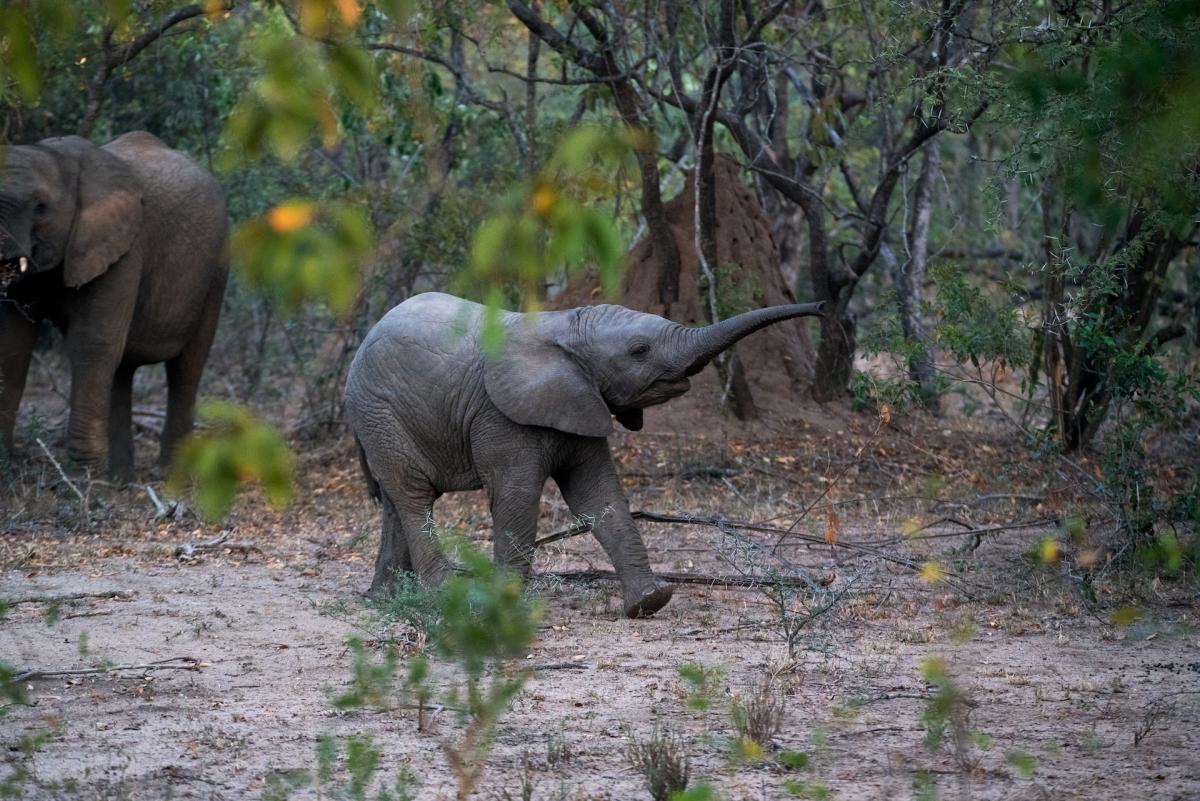
- Name: African forest elephant
- Scientific name: Loxodonta cyclotis
- Conservation status:
Believe it or not, it actually makes sense to talk about the African forest elephant after the hyrax… because hyraxes are some of the closest relatives of elephants!
The African forest elephant is the smaller of two African species of elephant. It can be found in central and western Africa, and is on the brink of extinction because of illegal poaching for its tusks and hunting for the bushmeat trade.
3. African manatee
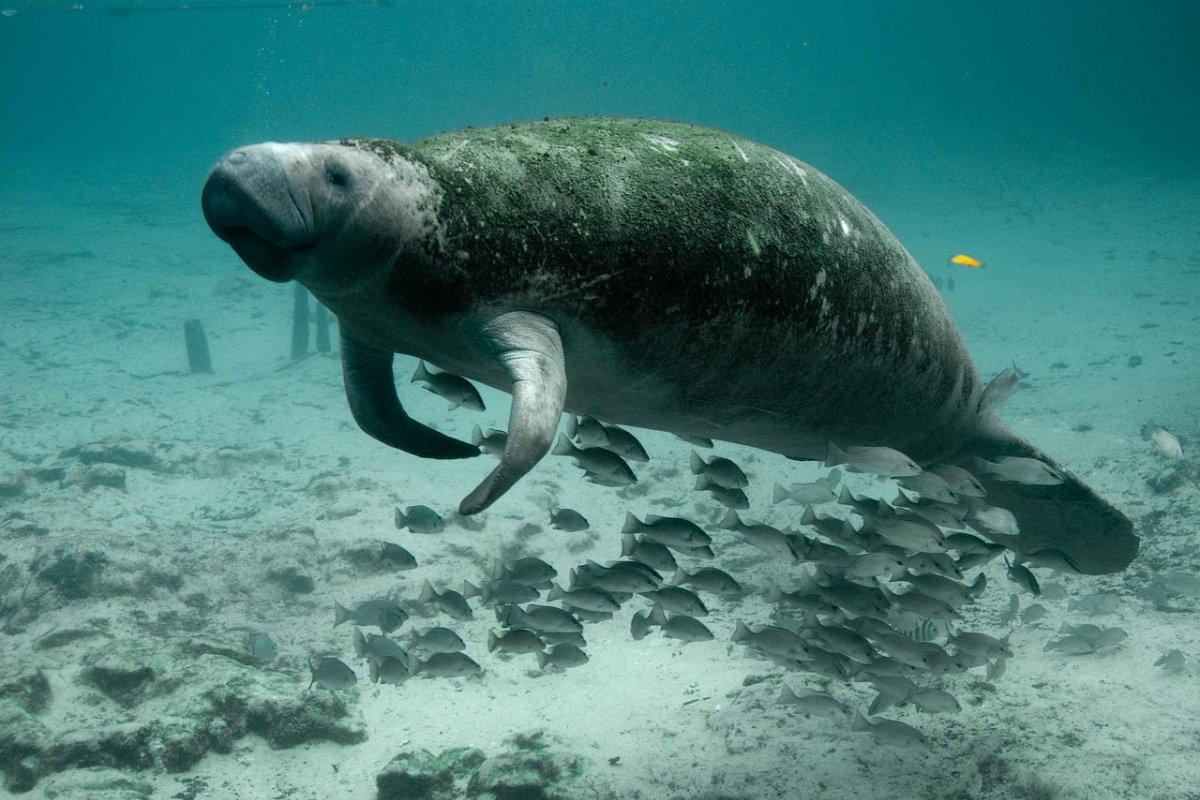
- Name: African manatee
- Scientific name: Trichechus senegalensis
- Conservation status:
The African manatee, also known as the West African manatee, is a large species of aquatic mammal that can be found in the open waters and inland rivers of western Africa. Not much is known about this species, but it has been seen as far as 75 km / 47 mi offshore, in mangrove creeks and shallow coastal flats.
Just like other manatees, the African manatee is seriously threatened by poaching for its meat, oil, bones, and skin, as well as urban and agricultural expansion, accidental fishing, and climate change causing severe droughts and a lack of water grasses.
4. Chimpanzee

- Name: Chimpanzee
- Scientific name: Pan troglodytes
- Conservation status:
The chimpanzee, widely known as the chimp, is a species of great ape native to the tropical areas of central and western Africa. It inhabits forests and savannas, and is considered endangered because of habitat loss, disease outbreaks, and poaching; despite this, there are still 170,000 to 300,000 individuals across its range.
This large monkey is particularly intelligent, and one of our closest relatives: it is able to craft and use tools to find food, such as sharpened sticks to spear mammals or modified sticks to acquire honey, ants, or water.
5. Diana monkey
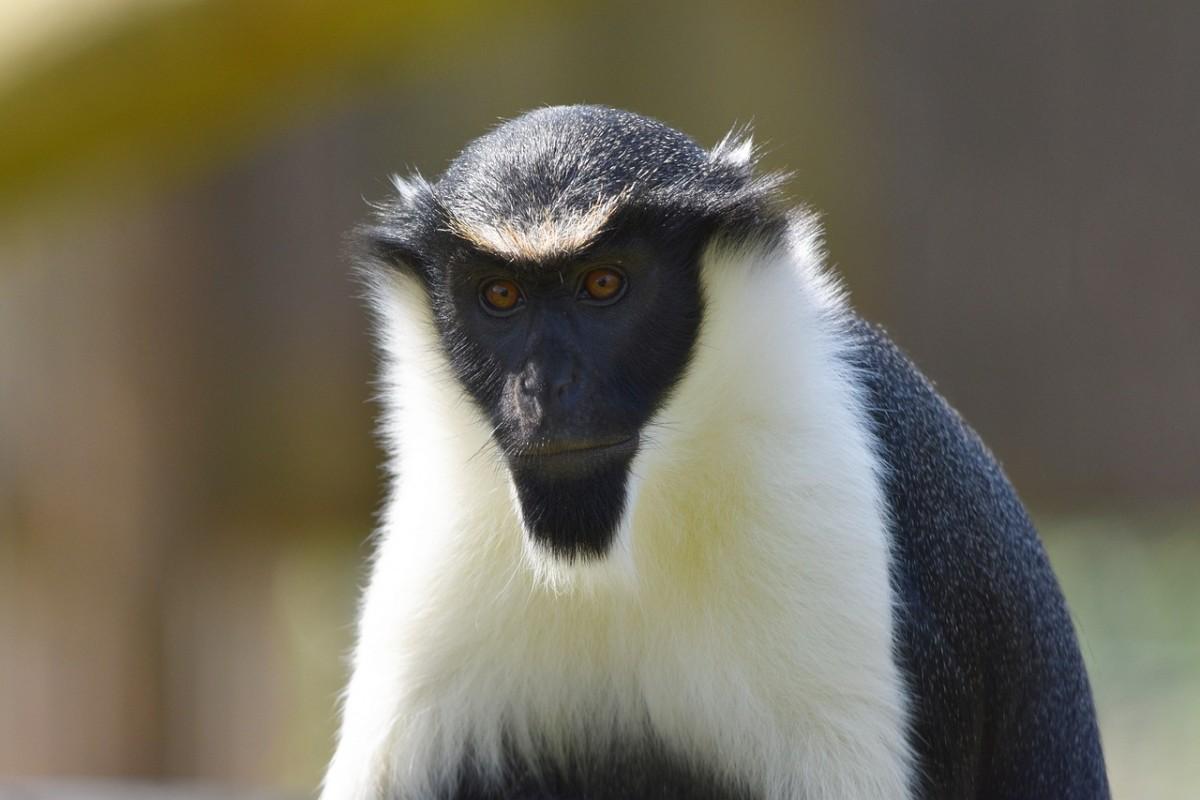
- Name: Diana monkey
- Scientific name: Cercopithecus diana
- Conservation status:
The Diana monkey is a species of Old World monkey native to a restricted area made of Ivory Coast, Liberia, and Sierra Leone. It was named after its white brow, which is said to resemble the bow of the Roman goddess Diana, and also has a white throat.
This monkey lives in the primary forests and is mainly endangered because of habitat destruction and hunting for bushmeat.
6. Giant pangolin
- Name: Giant pangolin
- Scientific name: Smutsia gigantea
- Conservation status:
The giant pangolin is, as its name suggests, the largest species of pangolin in the world. It lives in central and western Africa along the equator, usually in savannas, forests, and rainforests with large termite populations and bodies of water.
This pangolin almost exclusively feeds on ants and termites, which it catches with its sticky tongue. Thanks to its long tail, it can walk as a biped and lean on termite mounds to crush them.
7. Sperm whale
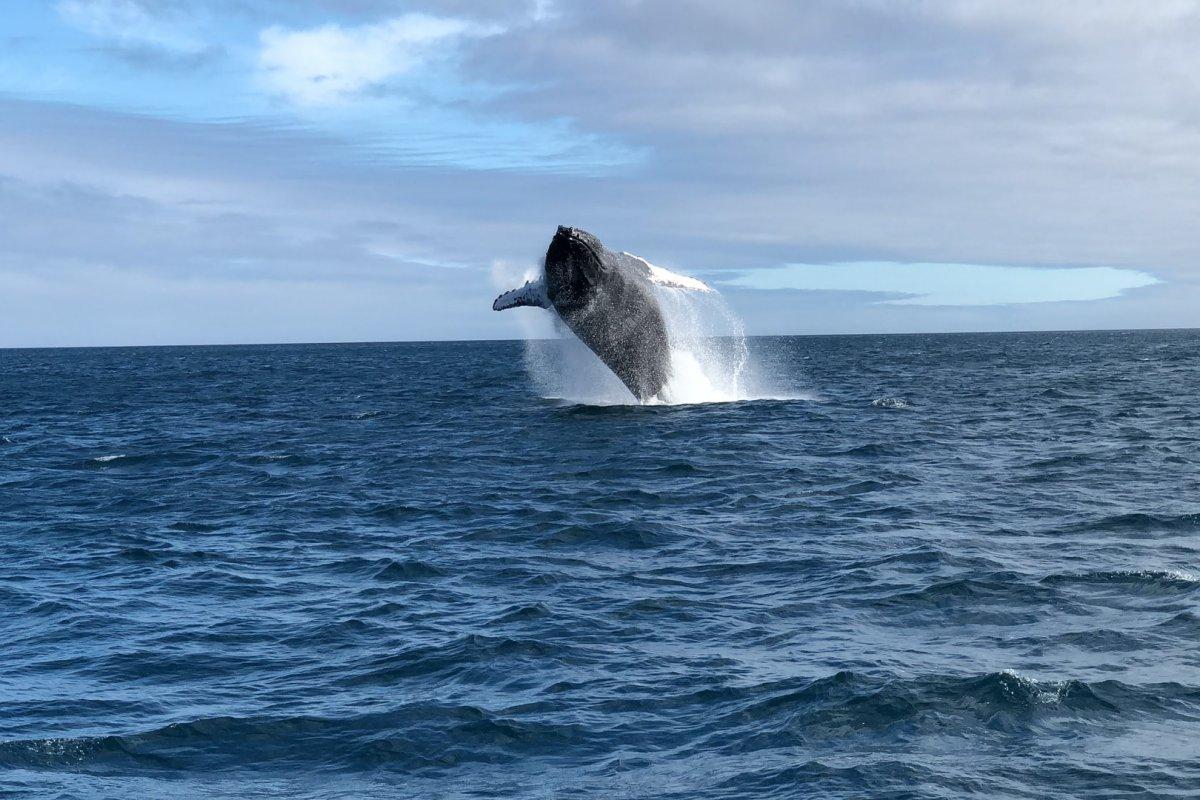
- Name: Sperm whale
- Scientific name: Physeter macrocephalus
- Conservation status:
The sperm whale, also known as the cachalot, is the largest toothed predator in the world. It is a toothed whale that can be found all around the world, and it migrates every season to breed and feed.
Some males can reach up to 20.7 m / 68 ft in length, and this mammal plunges to 2,250 m / 7,382 ft, making it the third-deepest diving mammal in the world, only exceeded by Cuvier’s beaked whale and the southern elephant seal!
8. Common kusimanse
- Name: Common kusimanse
- Scientific name: Crossarchus obscurus
- Conservation status:
The common kusimanse, also known as the kusimanse or the long-nosed kusimanse, is a species of mongoose native to a small area of western Africa, from Liberia to Ghana. It has also been exported to several other countries for the pet trade, and it differs from other mongooses in its choice of habitat, usually forests with bodies of water, instead of a semi-open brush or open grasslands.
9. Yellow-backed duiker
- Name: Yellow-backed duiker
- Scientific name: Cephalophus silvicultor
- Conservation status:
The yellow-backed duiker is a species of forest antelope native to central and western Africa, from Senegal to Gambia and Western Uganda. It is easily stressed and usually runs blindly from a threat when frightened.
This antelope mostly subsists on plant material such as roots, leaves, shoots, and buds, as well as fruits. Since most domesticated fruits are not well suited for the yellow-backed duiker, it is very hard to keep them in captivity.
10. Common warthog
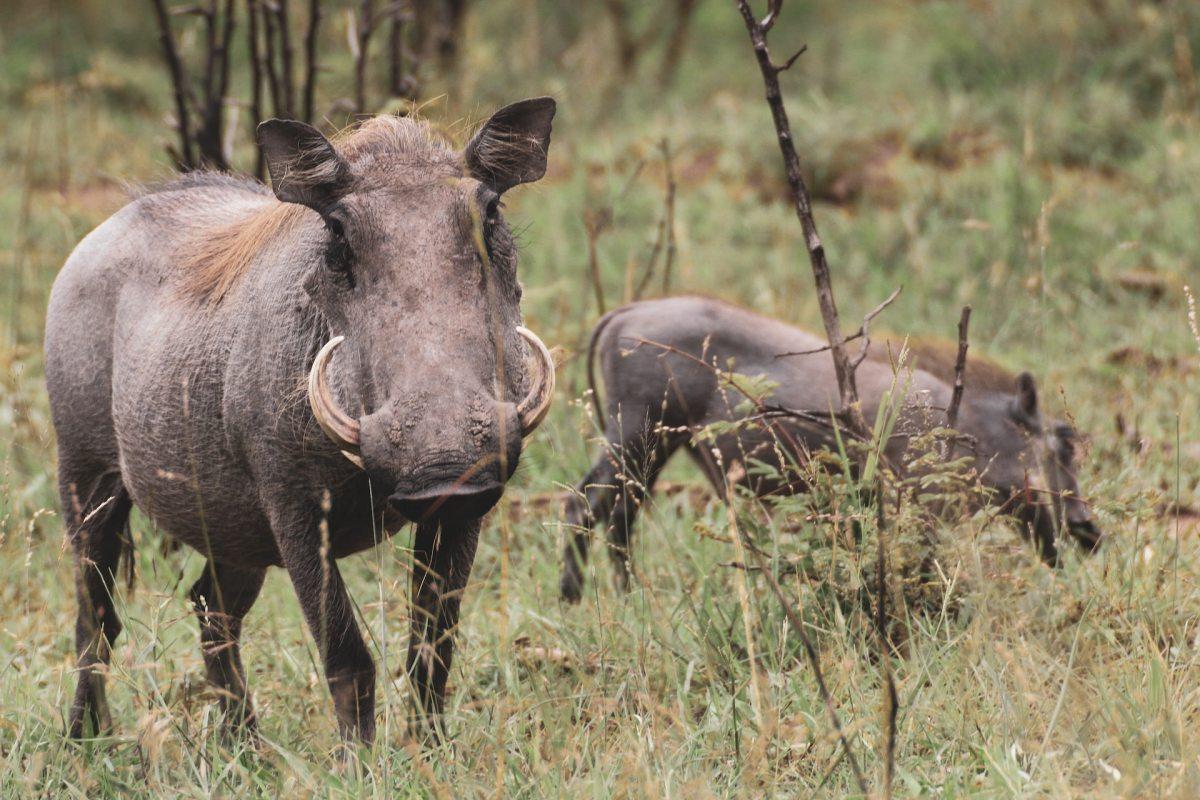
- Name: Common warthog
- Scientific name: Phacochoerus africanus
- Conservation status:
The common warthog is a species of wild pig found across much of sub-Saharan Africa. It lives in savannas, woodlands, and grasslands, and is further divided into 4 subspecies: the southern warthog, the Central African warthog, the Eritrean warthog, and the Nolan warthog.
This wild pig is the only one that has adapted to grazing and savanna habitats. It can feed on almost anything, from grasses and fruits to insects, eggs, and even carrion, and is a fantastic opponent that even lions and leopards fear.
—
So there you have them, these were my 10 wild animals in Liberia. I hope you enjoyed this list and that you learned something new today.
In case you want to learn more about Liberia wildlife, feel free to keep reading, as I still have lots of things to tell you about:
Endangered Animals of Liberia
This is definitely the saddest part of the list, but it is very important to raise awareness. Because of this, let’s go through the list of endangered animals in Liberia.
Here are the animals in danger of extinction in Liberia.
- None
- Home’s hinge-back tortoise
- Great hammerhead
- Oceanic whitetip shark
- Hooded vulture
- African forest elephant
- and 28 more…
- Diana monkey
- Jentink’s duiker
- Chimpanzee
- Whitespotted eagle ray
- King colobus
- and 63 more…
To see the full list of endangered species in Liberia, head over to the International Union for Conservation of Nature’s Red List.
What is the National Animal of Liberia?
The national animal of Liberia is the lion.
Similarly to many countries in Africa, Liberia chose the lion as its national emblem. It is a powerful, fierce predator that embodies might, pride and freedom.
Overall, the lion is one of the most widespread animal symbols in human culture. It can be found in paintings, sculptures, literature, and films, and is a common character in stories, dances, and proverbs in Africa. Its name in Swahili, “Simba”, means king, strong and aggressive.
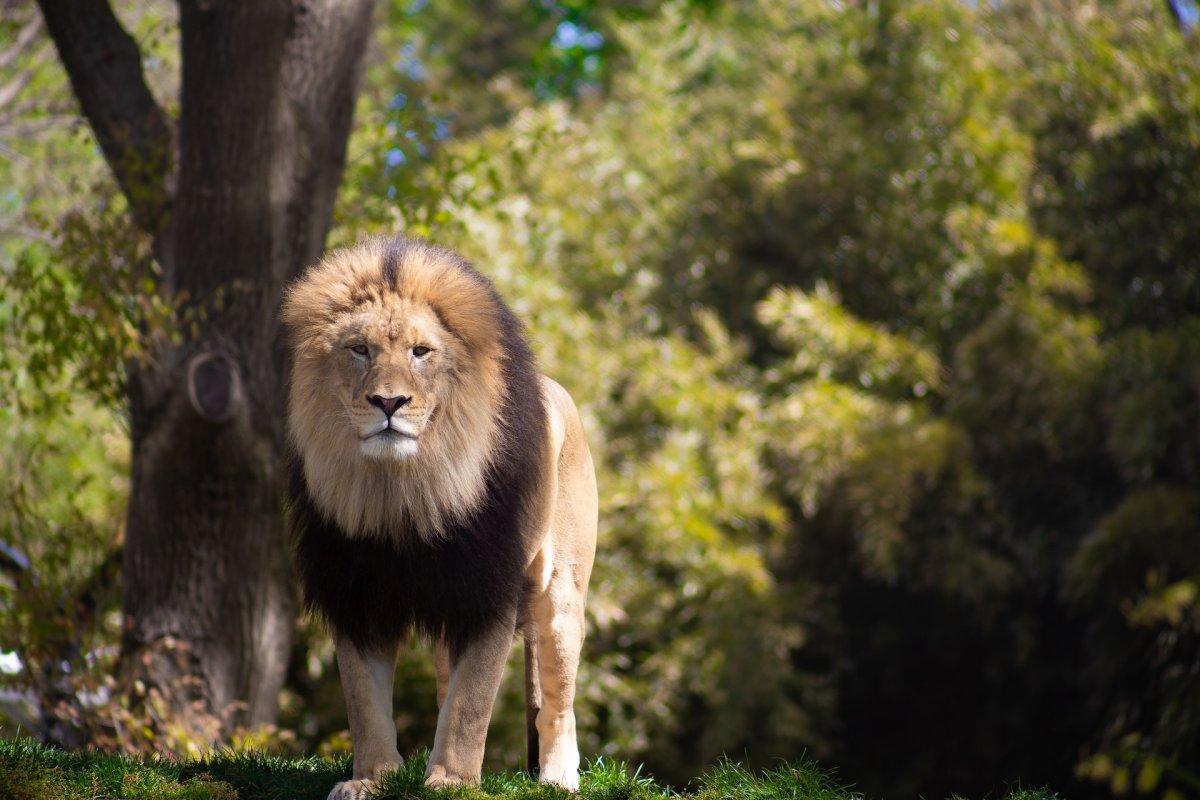
How Many Animals Native to Liberia?
What is the diversity of native animals in Liberia?
Let’s look at the total number of species of Chordata (mammals, birds, fishes, and reptiles).
Total number of animal species in Liberia: 1,983 (14,205 in total in sub-Saharan Africa)
What monkeys are in Liberia?
Just like almost any other African country, Liberia has lots of monkey species!
The full list is as follows: the common chimpanzee, the olive colobus, the western red colobus, the king colobus, the sooty mangabey, the lesser spot-nosed monkey, the greater spot-nosed monkey, Campbell’s mona monkey, the green monkey, the Senegal bushbaby, Prince Demidoff’s bushbaby, and the potto.
What snakes are in Liberia?
In Liberia, there are even more snakes than monkeys, and I will try to list as many as I can.
Here we go: the plain cat snake, the savanna file snake, the green snake, the striped-keeled snake, the green-keeled snake, the herald snake, Smith’s water snake, the African water snake, the rock python, the powdery tree snake, Blanding’s tree snake, the black tree snake, the forest vine snake, the boomslang, the variable burrowing asp, the fat burrowing asp, the spotted night adder, the forest night adder, the green bush viper, the West African gaboon viper, the nose-horned viper, the black tree cobra, the spitting cobra, the forest cobra, and the western green mamba.
These are sorted from harmless to potentially life-threatening. More info here.
More About Animals in the World!
Loved these Liberia animal facts? Want to see what animals live in other countries?
Then check out these posts:
Or click here to see ALL the facts up on the blog! Spoiler alert: there’s A LOT of them.
Share the knowledge! Click on the buttons below to share information about these famous animals in Liberia with your friends, and help them learn more about the world 🙂
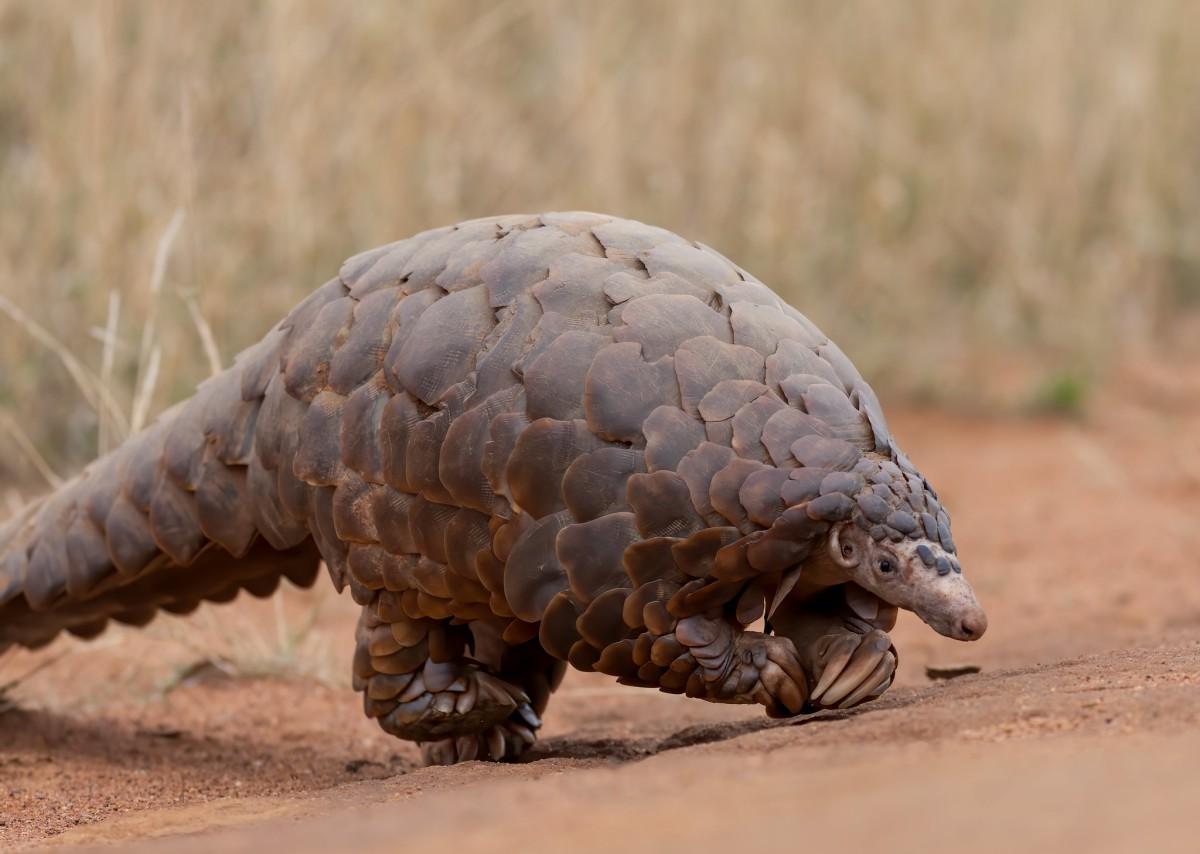
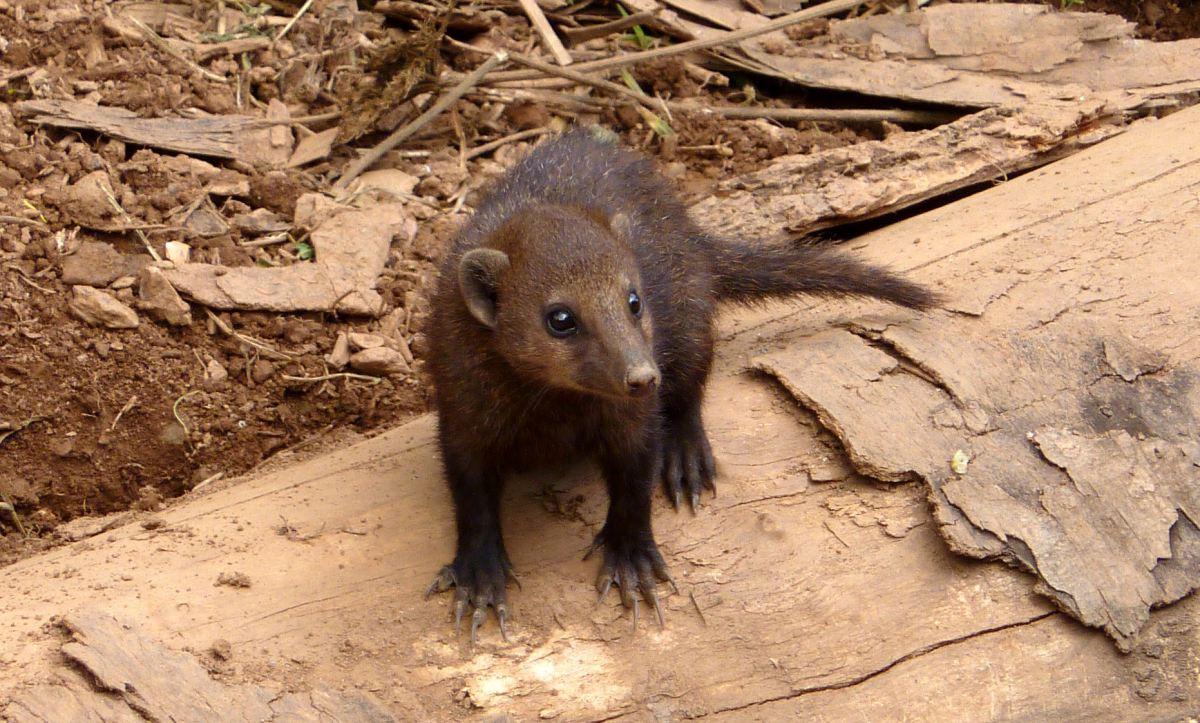
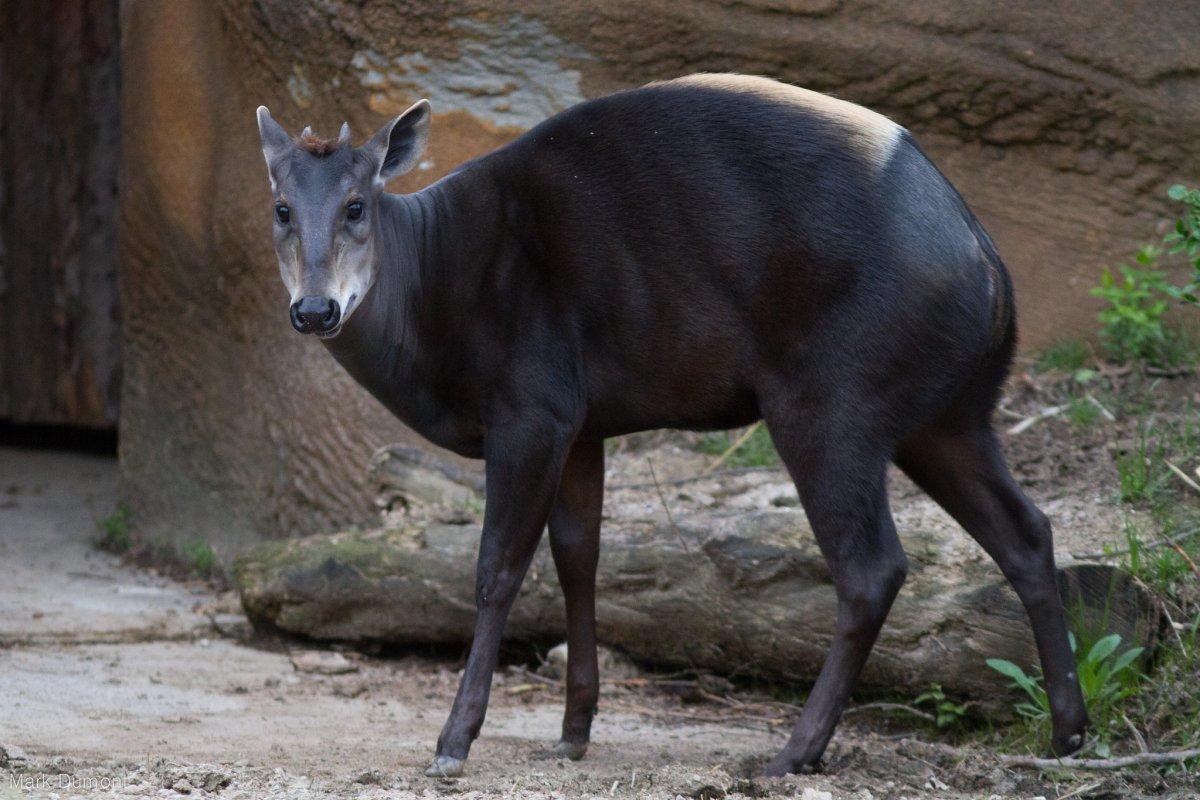

![18 Wild Animals in Morocco [Wildlife in Morocco]](https://www.kevmrc.com/wp-content/uploads/2022/11/18-wild-animals-in-morocco.jpg)
![10 Wild Animals in Algeria [Wildlife in Algeria]](https://www.kevmrc.com/wp-content/uploads/2022/11/10-wild-animals-in-algeria.jpg)
![10 Wild Animals in Sudan [Wildlife in Sudan]](https://www.kevmrc.com/wp-content/uploads/2022/12/10-wild-animals-in-sudan.jpg)